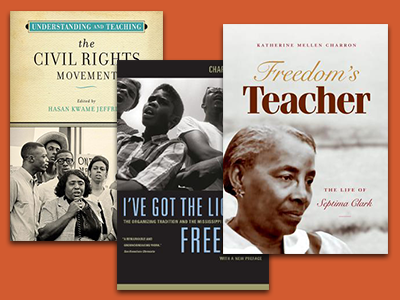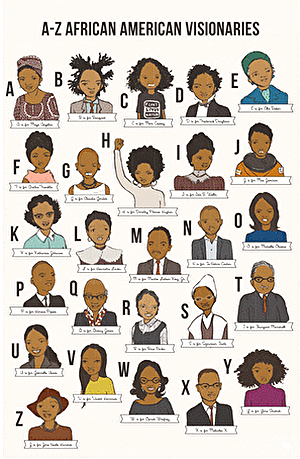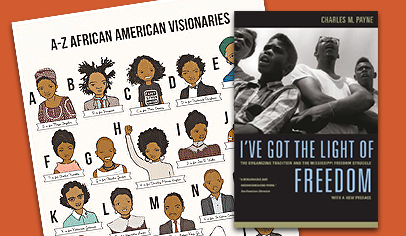Teaching students to celebrate Black leaders and historical events involves discussing both achievements and the hardships they’ve faced. For Black History Month, we’ve rounded up 10 ideas to give students of all ages a deeper understanding of some of America’s greatest leaders.
Note: In 2025, the theme for Black History month is African Americans and Labor. As you review some of our classroom activities, it’s nice to remember that fundamental theme.
Have students write an “I Have a Dream” speech
Invite students to write and deliver a speech about an issue of concern to them and what they’d do to make a difference. Students who are too young to write a speech can make posters showing what freedom looks like to them. Hang these in your school lobby and hallways.
via PTOtoday.com
Read (and provide books) about civil rights
There are plenty of good children’s books about Martin Luther King Jr., Malcolm X., Rosa Parks, and other figures involved in the struggle for racial equality in the United States. This list from Teaching for Change categorizes books from early elementary through high school and includes titles for teachers’ reading.
As well, many schools across the country are broadening their schools’ book collections with intentional selections of books about people of color, and by nonwhite authors. Scholastic offers a list of 28 Books That Amplify Black Voices includes picture books, middle grade, and young adult.

Start a class community service project
Observed each year on the third Monday in January as “a day on, not a day off,” MLK Day is the only federal holiday designated as a national day of service to encourage all Americans to volunteer to improve their communities.
Carry the service sentiment forward during Black History Month by choosing a cause for your classroom. You could have students collect canned goods for a food pantry, adopt a park to spruce up, or raise money for a nonprofit that stands up for people’s civil rights.
Begin each class with a Fact of the Day
Once your students are settled in for the morning, deliver a short, 5-minute lesson on one fact in Black history. Did you know Garret Morgan, the first Black car owner in Cleveland, invented the three-light traffic light in 1923?
Or how about Lonnie Johnson, the Air Force and NASA engineer who changed childhood summers forever with the invention of the Super Soaker? These are just a few examples of Black excellence that will start your students’ day with positivity and inclusivity. Provide a brief background and context around the fact, and by the end of the month, your students will have a plethora of knowledge about how Black people have shaped the world they live in today.
Teach Black art in the classroom
PBS for Parents has great insights on how and why art inspires discussion, even in children. It also comes with a bounty of benefits from improved vocabulary to social-emotional learning, and more.
Aisha White, Ph.D. further explains how Black art is an excellent way to teach the importance of representation, which in turn teaches children to resist race-based negativity. Some great Black artists to get your students talking include Jacob Lawrence, Elizabeth Catlett, and Clementine Hunter.
Decorate your door
Over the past few years, door decorating has been used for teacher appreciation and to add cheer—add awareness and empowerment to that list of reasons. These teachers’ door decorations both empower students and start powerful conversations.
Create a virtual museum on slavery and its legacy
Thirteen.org offers a downloadable PowerPoint template and a lesson plan, as well as write-ups from classrooms that created virtual museums. “It showed me how white plantation owners really treated their slaves,” said one student.
Plan a virtual museum visit
As part of its Open Access initiative, the Smithsonian National Museum of African American History & Culture is allowing images from its collection to be viewed, downloaded, and shared. You can browse the vast collection by topic, date, or place.
You can also check African American History Month’s list of exhibits and collections, with categories ranging from slavery and civil rights leaders to notable Black baseball figures.
Celebrate visionaries
Education.com offers a free downloadable A-Z African American Visionaries poster, around which you can plan complementary classroom activities. Have students:
- Research one of the visionaries online or by finding books at the library
- Create a piece of writing, poster, or art to teach others about what they learned
- Challenge themselves by researching all of the African American visionaries from A-Z

via education.com
Emphasize the power of art
This year’s Black History Month theme makes this an opportune time to talk about how Black art has influenced America and beyond. The 1920s/30s gave way to the Black Renaissance, the 60s saw the rise of the Black Arts Movement, and the 70s changed everything with the establishment of hip-hop. And don’t forget to mention the invention of Jazz in New Orleans!





hey I am a music teacher- how about some music resources? 🙂